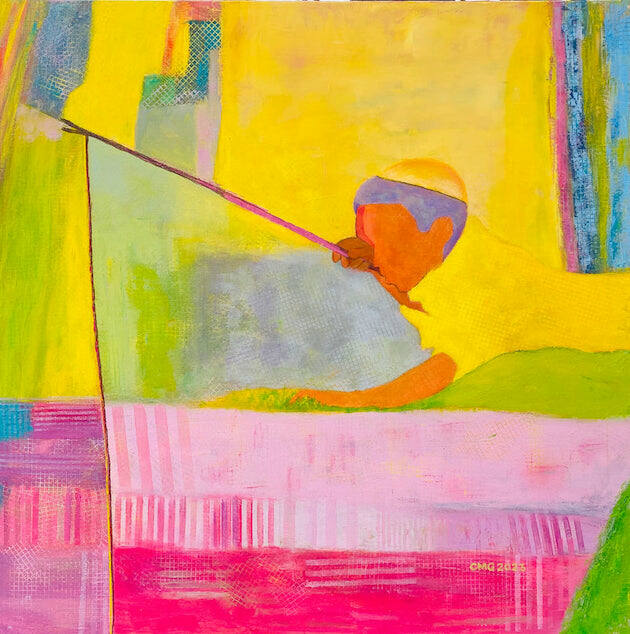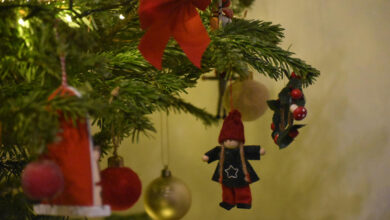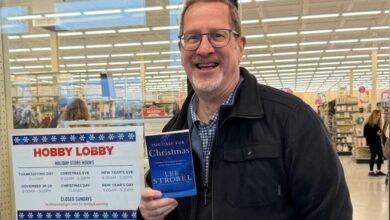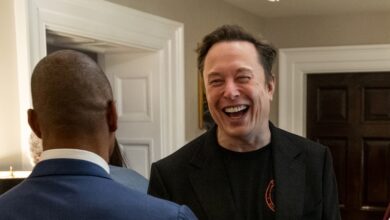Artist portrays the Jewishness of Jesus

For many, the Jewishness of Jesus has been lost as Christianity recast his image to fit a gentile faith. This artist to portrays a more authentic identity through stirring images.
As an artist and as a person of faith, Clara Maria Goldstein is difficult to pigeonhole.

Raised as a Roman Catholic in her native Nicaragua, she moved to the United States with a 1-year-old daughter, Alejandra, in the 1980s at age 21.
She learned to speak English, then eventually made her way to the University of Wisconsin Law School, where she met and married a fellow law student, Jason Goldstein.
That’s when she converted to Judaism — “for the marriage thing.” She had two sons, Isaac and Julian, and in 2005 left practicing law to pursue art. She’d started painting in 1988.
“Being a lawyer is really not my thing,” she said.

As an artist, she now explores her dual religious roots by portraying the Jesus of her Christian childhood as the Jew he undoubtedly was. She lives and paints in La Crosse, Wisconsin.
Goldstein emailed me a few weeks ago after happening upon a column I once wrote about Christianity’s Jewish roots, which she had liked. After we corresponded briefly, I took a look at her website and was much impressed. I don’t know of another artist who is exploring this theme. I thought you might enjoy her art, too.
In her works we see a young Jesus celebrating Hanukkah or just fishing in the sunshine. We see an adult Jesus dressed as a rabbi.
Her work sometimes blurs the lines between past and present. The overall effect can be enchanting and illuminating. For instance, the Jesus depicted as fishing in the sunshine wears a Jewish kippah, or skullcap, something Jesus might not have worn as a first century child, and what appears to be present-day clothes.
Her own beliefs about the Almighty haven’t changed much.
“Same as a Christian and same as a Jew,” she said. “I pray to the same God.”
Her conversion process to Judaism did alter her spiritual vision in another way, though.
When she was a child, her Catholic priest would read aloud from the New Testament during church services.

Though it wasn’t his intention or her church’s, she said, “I got prejudiced against the Jews.”
To her, the New Testament cast Jews as bad people. She didn’t fully understand that the heroic characters such as Jesus, Mary and the apostles were all Jewish themselves.
It wasn’t until her conversion that she began to reconsider her own assumptions. She connected the dots between her first faith tradition and her new one.
“When I was learning Judaism,” she said, “I’m learning about Jesus, things I had no clue of before.”
For instance, “I didn’t know Jesus celebrated Hanukkah.”
She’d basically thought Jesus was a Christian who spoke Latin. Instead, she realized he spoke Aramaic and would have known Hebrew, too, in order to read the Jewish Bible, which Christians call the Old Testament and which takes up about two-thirds of the Christian Scriptures.
She felt that mistakes of perception such as hers have historically had dire consequences. Misinformation can “grow from there to horrible acts of violence,” Goldstein said.
Art is important partly because it helps shape our understanding of people and events. Being an artist, Goldstein assumed that when people think of Jesus they recall paintings they’ve seen. (Typically, I’d guess, that would be Christian Eurocentric portrayals of Jesus as a blond, blue-eyed White man). But few paintings have portrayed Jesus as specifically Jewish.
She decided “people” needed to do something about that.
Then the idea occurred to her: “Who’s people? People is me.”
She found her calling. As said, it’s not specifically a religious thing.
Early on in her new vocation, in 2006, she got pushback against her paintings. A La Crosse hospital where her works were exhibited found them controversial and told her to take them down. This led to a minor tempest in the media.
But to Goldstein, even the controversy turned out to be a good thing, because it helped more people remember that Jesus was Jewish.
Since then, things have gone comparatively smoothly.
If you’d like to see Goldstein’s work for yourself, or perhaps even order a print, visit https://claramariagoldstein.com/.
–Paul Prather has been a rural Pentecostal pastor in Kentucky for more than 40 years. Also a journalist, he was The Lexington Herald-Leader’s staff religion writer in the 1990s, before leaving to devote his full time to the ministry. He now writes a regular column about faith and religion for the Herald-Leader, where this column first appeared. Prather’s written four books. You can email him at pratpd@yahoo.com.







